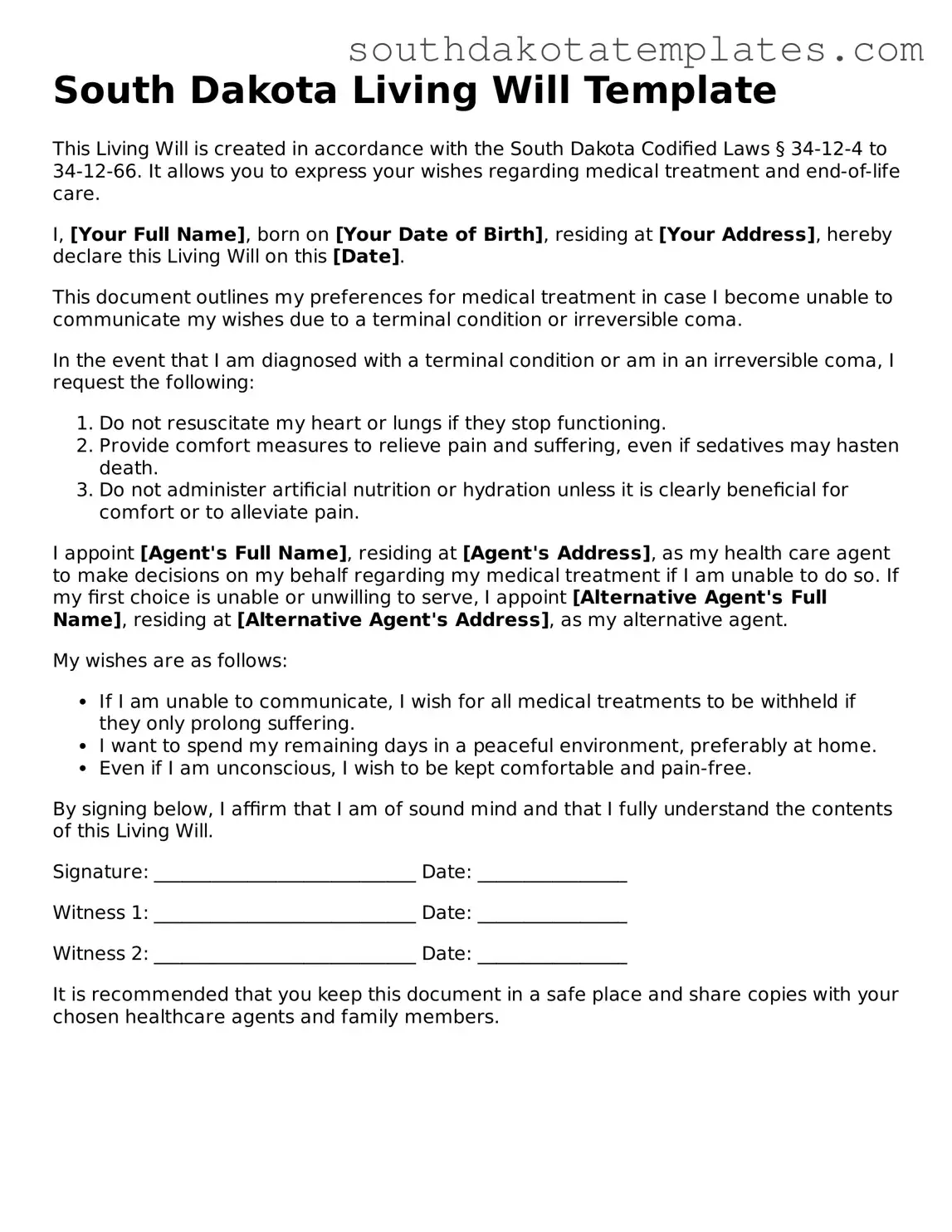When it comes to planning for the future, many people overlook the importance of a living will, especially in states like South Dakota. This crucial document allows individuals to express their healthcare preferences in the event they become unable to communicate their wishes due to illness or incapacitation. A South Dakota living will outlines specific medical treatments one may or may not want, guiding healthcare providers and loved ones in making decisions that align with the individual's values and desires. Key aspects of this form include the ability to specify preferences regarding life-sustaining treatments, such as resuscitation efforts and artificial nutrition or hydration. Additionally, it empowers individuals to appoint a healthcare proxy, someone trusted to make medical decisions on their behalf if they are unable to do so. Understanding the nuances of this document can provide peace of mind and ensure that your wishes are respected during critical moments. In South Dakota, having a living will is not just a legal formality; it is a vital tool for asserting control over one’s healthcare choices.
